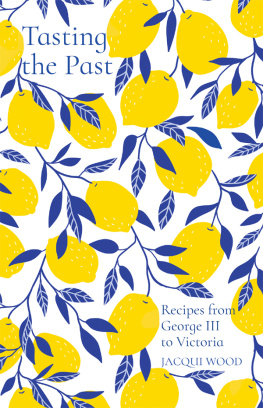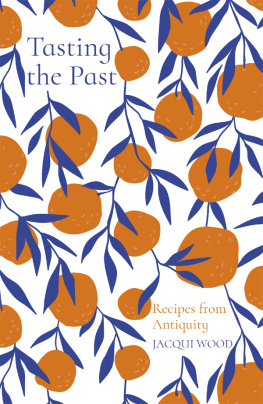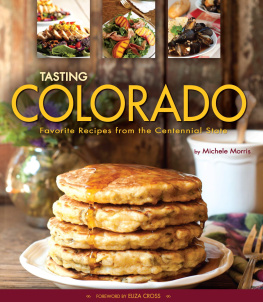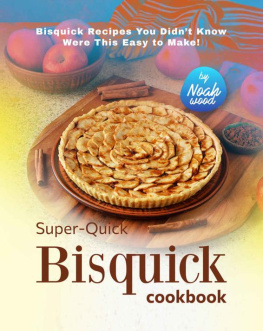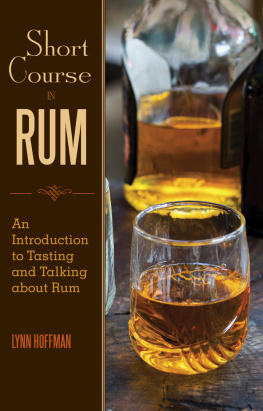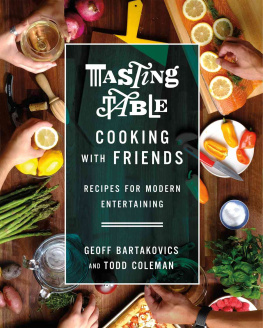Jacqui Wood - Tasting the Past: Recipes From the Second World War to the 1980s
Here you can read online Jacqui Wood - Tasting the Past: Recipes From the Second World War to the 1980s full text of the book (entire story) in english for free. Download pdf and epub, get meaning, cover and reviews about this ebook. publisher: Lightning Source Inc. (Tier 1), genre: Home and family. Description of the work, (preface) as well as reviews are available. Best literature library LitArk.com created for fans of good reading and offers a wide selection of genres:
Romance novel
Science fiction
Adventure
Detective
Science
History
Home and family
Prose
Art
Politics
Computer
Non-fiction
Religion
Business
Children
Humor
Choose a favorite category and find really read worthwhile books. Enjoy immersion in the world of imagination, feel the emotions of the characters or learn something new for yourself, make an fascinating discovery.
- Book:Tasting the Past: Recipes From the Second World War to the 1980s
- Author:
- Publisher:Lightning Source Inc. (Tier 1)
- Genre:
- Rating:3 / 5
- Favourites:Add to favourites
- Your mark:
- 60
- 1
- 2
- 3
- 4
- 5
Tasting the Past: Recipes From the Second World War to the 1980s: summary, description and annotation
We offer to read an annotation, description, summary or preface (depends on what the author of the book "Tasting the Past: Recipes From the Second World War to the 1980s" wrote himself). If you haven't found the necessary information about the book — write in the comments, we will try to find it.
Jacqui Wood: author's other books
Who wrote Tasting the Past: Recipes From the Second World War to the 1980s? Find out the surname, the name of the author of the book and a list of all author's works by series.
Tasting the Past: Recipes From the Second World War to the 1980s — read online for free the complete book (whole text) full work
Below is the text of the book, divided by pages. System saving the place of the last page read, allows you to conveniently read the book "Tasting the Past: Recipes From the Second World War to the 1980s" online for free, without having to search again every time where you left off. Put a bookmark, and you can go to the page where you finished reading at any time.
Font size:
Interval:
Bookmark:

Tasting
the Past
the Past
Recipes from
the Second
World War to
the 1980s
JACQUI WOOD

Cover Illustration: Utro_na_more/iStockphoto
First published 2009, as part of Tasting the Past: Recipes from the Stone Age to the Present.
This edition published 2020
The History Press
97 St Georges Place, Cheltenham,
Gloucestershire, GL50 3QB
www.thehistorypress.co.uk
Jacqui Wood, 2009, 2020
The right of Jacqui Wood to be identified as the Author of this work has been asserted in accordance with the Copyright, Designs and Patents Act 1988.
All rights reserved. No part of this book may be reprinted or reproduced or utilised in any form or by any electronic, mechanical or other means, now known or hereafter invented, including photocopying and recording, or in any information storage or retrieval system, without the permission in writing from the Publishers.
British Library Cataloguing in Publication Data.
A catalogue record for this book is available from the British Library.
ISBN 978 0 7509 9648 8
Typesetting and origination by The History Press
Printed and bound in Great Britain by TJ International Ltd.
eBook converted by Geethik Technologies

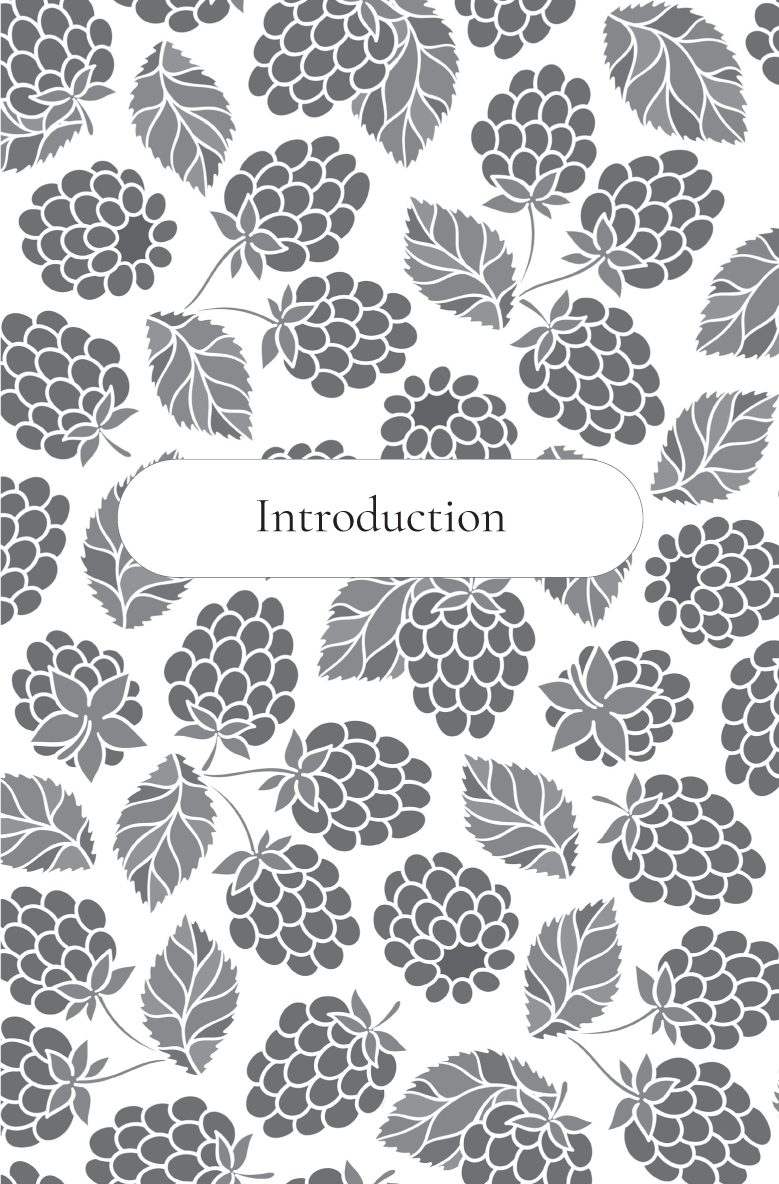
BRITISH FOOD HAS been hard to categorise in the past compared to the very distinctive cuisines of countries such as Italy, France and Germany. This is because it is an amalgamation of all of them, in the same way that the English language (the only truly European language, by the way) is a combination of five European languages: Celtic, Latin, Saxon, Viking and Norman. Our cuisine, too, is a combination of the typical foods of those that once conquered Britain over a thousand years ago.
But Britains assimilation of the foods of other cultures did not stop after the Norman Conquest. During the Medieval period, the spices brought from the Crusades by the Normans were used in almost every dish by those who could afford them. When Britain itself began to have colonies, the culinary embellishments to our diet began again. During the Elizabethan period, strange produce coming from the New World was also adopted with relish by our forbears.
The Civil War period introduced Puritan restrictions to our daily fare, making it against the law to eat a mince pie on Christmas Day because it was thought a decadent Papist tradition. The Georgians took on chocolate and coffee with gusto and even moulded their business transactions around the partaking of such beverages. But it was really not until the Victorian period when it was said that the sun never set on the British Empire that our diet became truly global in nature.
This book will attempt to trace the roots of these influences on our traditional British cuisine. We should be very proud that we have adopted so much of the worlds tastes into our traditional diet, rather than being ashamed of a seemingly patchwork and non-descript culinary heritage, as some people have described it.
This book will also look at the recipes we commonly use today and see if they are as modern as we think they are, or whether they have very ancient roots. I hope to show as we cover the different periods from prehistory to the post-war years right up until the 1970s that our love affair with exotic foods is not as new a trend as some of us seem to think. I have also included some recipes that, although well used and loved throughout history, have now been completely abandoned, in the hope that a few may be revived.
This book will hopefully become a manual for those readers who want to put on a themed dinner party, providing a wide selection of recipes from each period in history. I have not included those recipes that I feel you would never want to make, as some historical cookbooks have done in the past. Instead, I want you to taste these dishes and experience what it was really like to eat during those particular periods. No one, apart from the truly adventurous among you, is going to acquire a cows udder from the butcher and stuff it as they did in the Medieval period, or stuff a fishs stomach with chopped cods liver!
I will begin this book by describing how our metabolism changed during the Stone Age, when we began to consume one of the most common food groups today: dairy products. Each chapter will begin with a brief introduction to the foods of the period that I found particularly fascinating during my research, and each chapter will end with the traditional Christmas food of the period (Solstice Feast food for the Celts). If you want to celebrate your Christmas in a completely different way, why not try some homely 1940s recipes or some 1980s-style party vol-au-vents?
One modern phenomenon of our diet-obsessed society is the Low Carbohydrate Diet. These particular diets are thought to stem from mankinds Hunter Gatherer period, and are now designed to help those of us who have overindulged to lose weight. If one looks at any primitive culture today, like the Bushmen of the Kalahari, you never see anyone overweight. The Hunter Gatherer diet comprised primarily lots of meat and fish. This type of food, once caught or hunted, would satisfy a persons hunger for longer than a cereal- or vegetable-based diet. We have all indulged in those huge Chinese takeaway meals, packed full of all sorts of vegetables that leave us feeling stuffed initially, but an hour or two later we start to feel hungry again.
As the name signifies, the hunter also gathered to supplement his protein-rich diet and to add variety, although fruits and nuts would have been seasonal and most of the leaves and stems they ate were only available in the spring and summer months. To summarise, the first Stone Age diet was predominantly meat and fish with seasonal banquets of nuts, berries and vegetation. One of the few vegetables available all year round would have been seaweed, which was probably gathered at the same time that shellfish were collected from the mid shoreline. It is also true that the tastiest wild vegetables can still only be found on the shorelines of northern Europe, where most Hunter Gatherer camps are found in the archaeological digs. These tasty vegetables include such delights as Rock Samphire, Sea Beet and Sea Holly, all of which are mentioned in my previous book, Prehistoric Cooking.
There are, however, serious consequences today for a large percentage of the population due to the ingenuity of the first farmers. Todays generation of allergic or food intolerant people can trace the origins of their dietary problems to the culinary practices of a group of Stone Age farmers.
It has been suggested that these problems are a result of modern agricultural businessmen overproducing chemically distorted products in their desire to make it all look the same and have a long shelf life in the supermarkets. Yet one of the most common food intolerances today is wheat: a hybridised wild grass plant. To find the origins of our first attempts at hybridising plants, we have to go back to the Fertile Crescent in the Middle East 11,000 years ago, to a people known as the Natufians who gathered wild grains to make into bread. The Fertile Crescent derives its name from the abundance of not just edible wild grains and pulses, but also the ancestors of our modern domestic livestock. It was almost inevitable, therefore, that the first settlements and agricultural experiments would have begun in this particular region. The city of Jericho, which is thought to be one of the only places on the planet that has been continually occupied for 11,000 years, is where these early plant experiments started as they cross-pollinated the wild grasses of the region.
Font size:
Interval:
Bookmark:
Similar books «Tasting the Past: Recipes From the Second World War to the 1980s»
Look at similar books to Tasting the Past: Recipes From the Second World War to the 1980s. We have selected literature similar in name and meaning in the hope of providing readers with more options to find new, interesting, not yet read works.
Discussion, reviews of the book Tasting the Past: Recipes From the Second World War to the 1980s and just readers' own opinions. Leave your comments, write what you think about the work, its meaning or the main characters. Specify what exactly you liked and what you didn't like, and why you think so.


